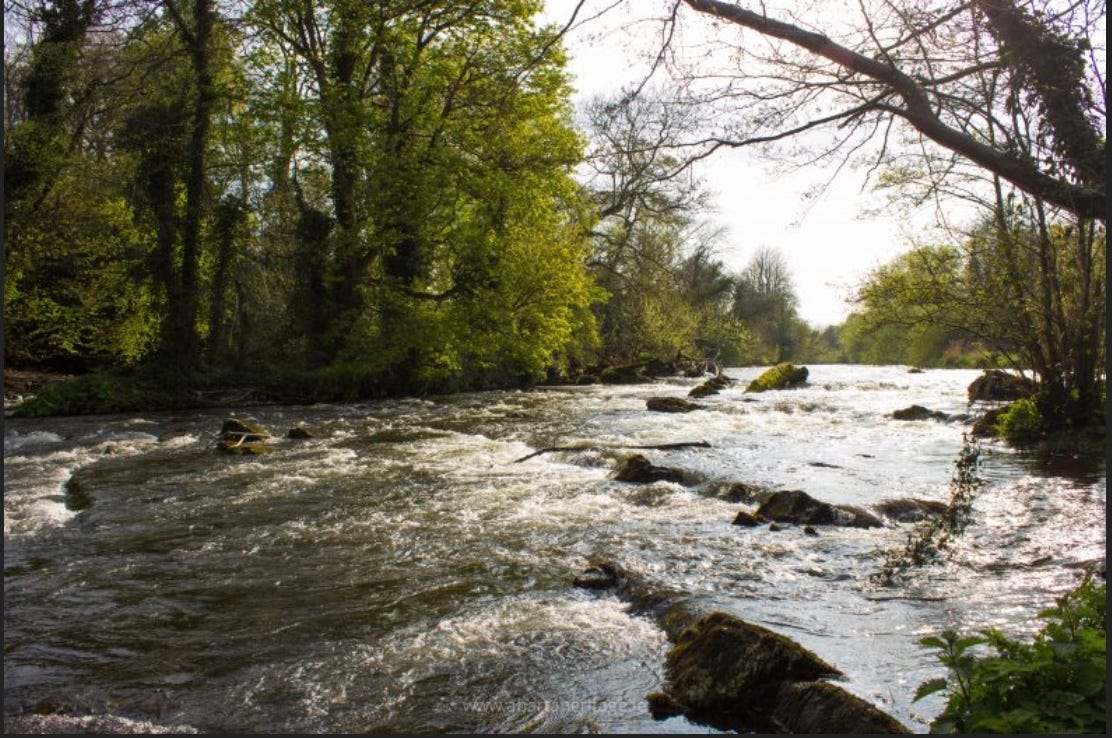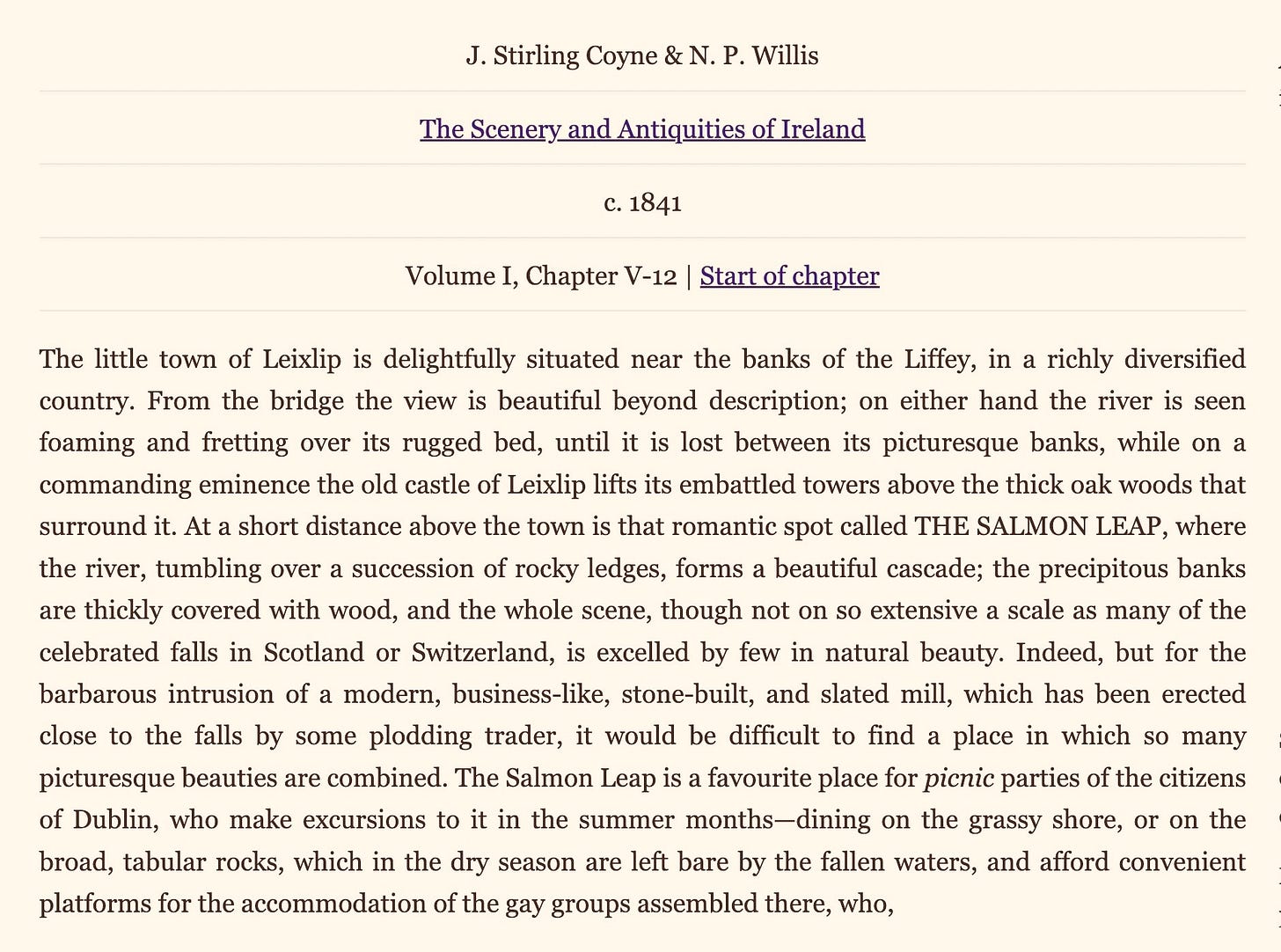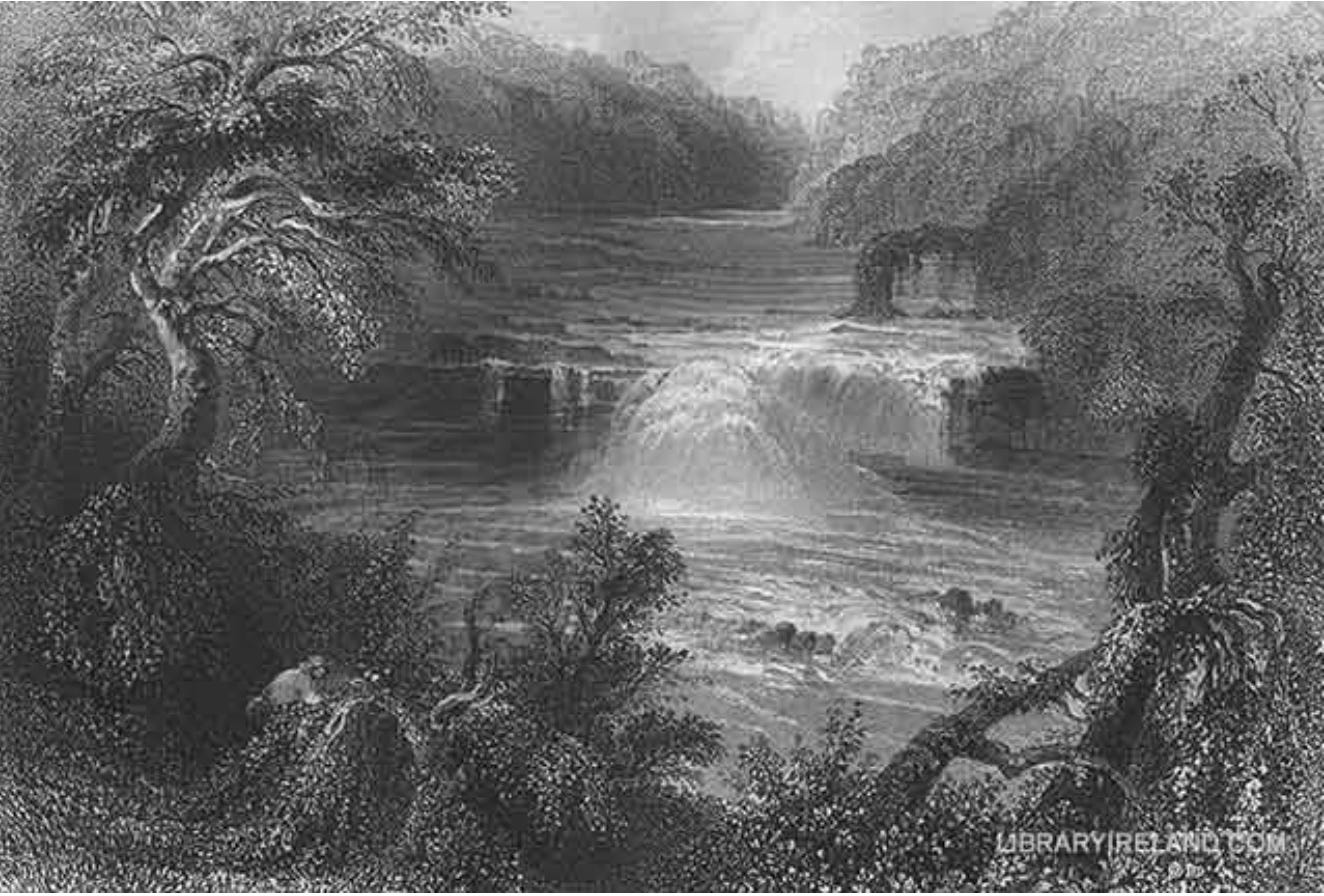Language is a people's backbone and the "old growth forest" of the mind. You may travel around Ireland for days, noting place names along the way, and using that information to create a mental map of the country. Those names hold intrigue, humour, history, and often banality. Also, every name functions similarly to a key. It has the power to open doors of significance and summon the past to suddenly confront you.
Consider my hometown of Leixlip, for instance. The name is meaningless, a strange anomaly with no profound historical significance. Perhaps it originated with the Vikings, who converted Laxlup into Leixlip through Anglasization. Does it really matter? Now let's talk about the Irish name, Leim a Bhradain, which translates to "the Jump of the Salmon" or just "Salmon Leap." That's a completely separate matter that captures our interest and begs inquiries. It moves and has vitality. How come the salmon? Have we suddenly entered the realm of myth? Are we getting into the finer points of a place-connection now?
The first thing to be aware of is that Leixlip is located along the Liffey River, which was formerly Ireland's top salmon river. Those salmon migrate upriver to their breeding grounds around Christmas, to those swift-moving, shallow, clear sections of river with their gravel beds. The fresh salmon spawn around April 1st. These are wild Atlantic salmon, and so the saltwater is beckoning them, they would stay by the gravel beds for two years until they started to feel quite uneasy, the lure of the open ocean calling them. Hence, the salmon head out to sea, making their way as far as Greenland in search of food. A few years later, when they reach adulthood and possessing exceptional navigational abilities, they return to their birthplace.
Some would return as far as Leim a Bhradain, where the Liffey runs through, and the salmon search for their spawning areas further upstream, and in Leim an Bhradain they encountered the Salmon Leap. James Joyce cited this place as one of Ireland's natural wonders, comparable to the Lakes of Killarney. I double-taked when I first read that: a natural marvel, like the Killarney Lakes? So I did some research.
Consider this excerpt from The Scenery and Antiquities of Ireland, published in 1841.
But the pools are gone. The very thing that gave Leixlip its original name. Today, modernity has changed the life of the Liffey and with it the life of the salmon. The State Electricity Company of Ireland, or ESB, started construction on a hydroelectric dam there in the middle of the 1940s. They brought about the demise of the Salmon Leap Pools. They have ceased to exist.
So. sometimes, a name can unlock a sad story, and point to the fact of just how much Ireland has changed in a single generation. What do we need to sacrifice for the cause of modernisation? All of it seems to paint a vivid picture of the Ireland of today. The dam faces Dublin, the nation's capital, with all of its business, industry, and movement as well as the future, the march of progress, and the ambitions of its citizens. However, in its quest for life, the salmon stares upriver, facing its past, its source, and the location it must return to in order to preserve the cycle of life and rebirth. The salmon has long been a representation of Ireland, its rich history, distinctive culture, and resilient spirit. Many people view the salmon's migration from the ocean to freshwater rivers in order to spawn as a metaphor for spiritual development, metamorphosis, and rebirth. Its capacity to go upstream in the face of strong currents and impediments is a symbol of tenacity and perseverance.
Returning the salmon to full health would make a strong message as a nod to the Irish people's spirit. How lost a people must become for a species so deeply ingrained in the land's life and energy and so enduring in its symbolism to be allowed to drift so dangerously close to extinction.
Do we want to live in an Ireland that allowed salmon to go extinct?








